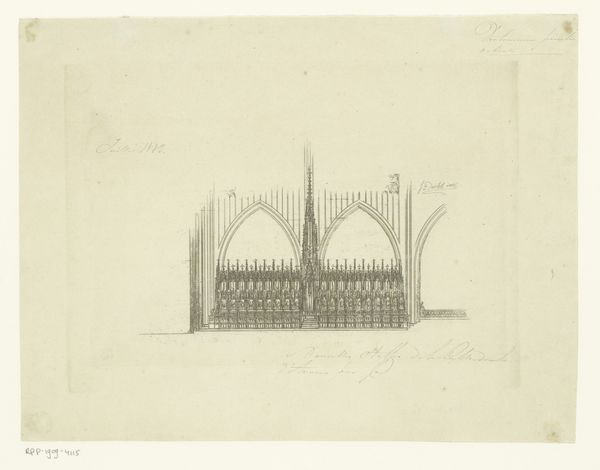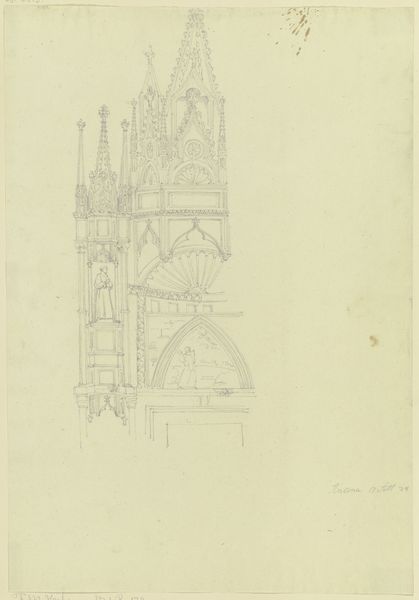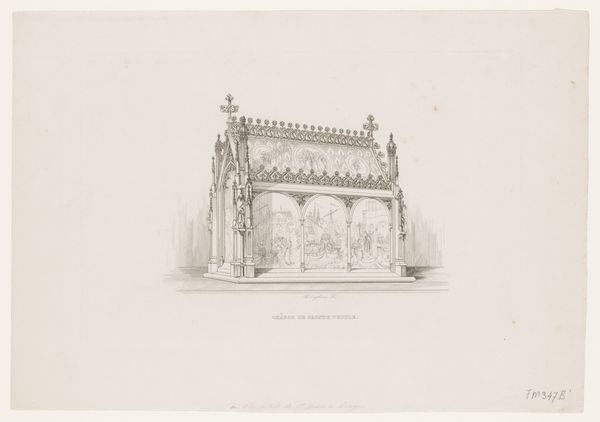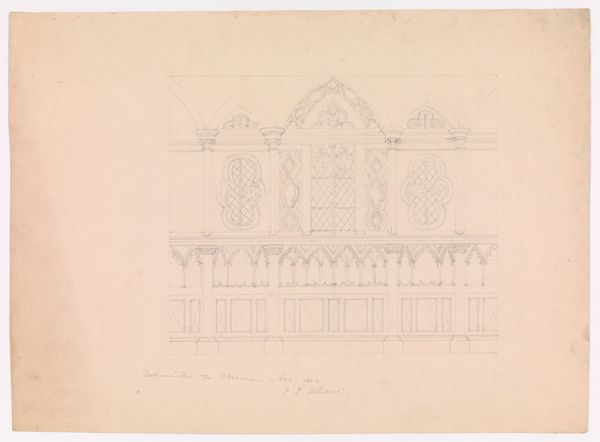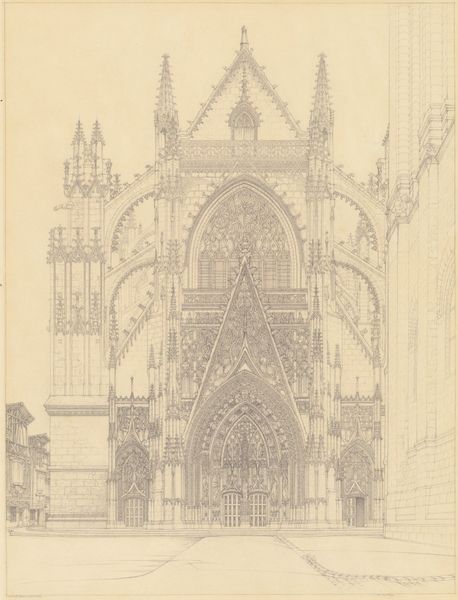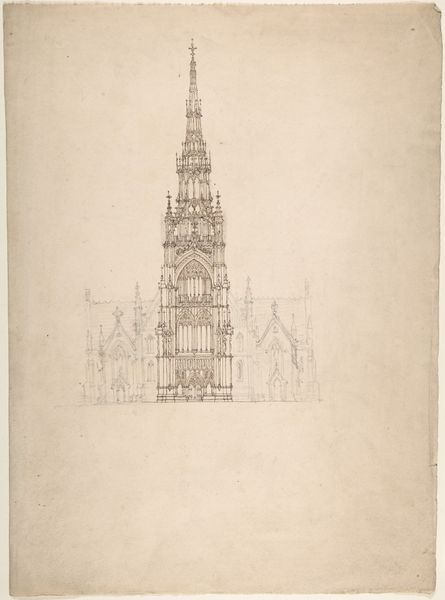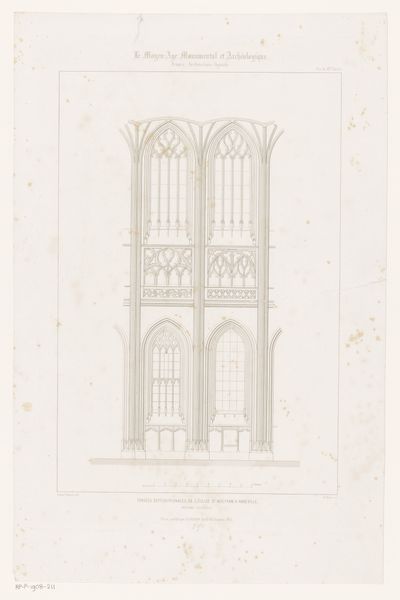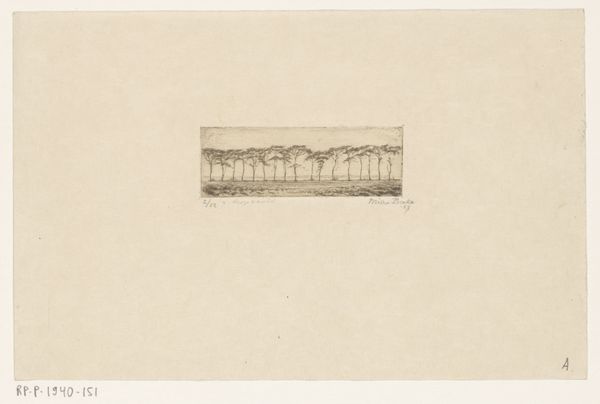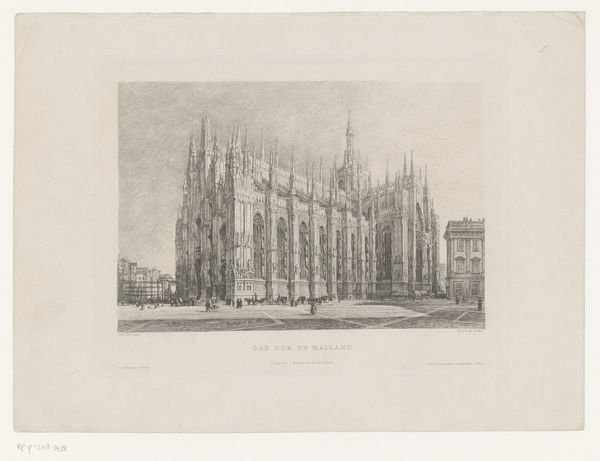
Ontwerp voor het koorgestoelte van de Onze-Lieve-Vrouwekathedraal te Antwerpen 1842
0:00
0:00
drawing, paper, pencil, architecture
#
drawing
#
aged paper
#
light pencil work
#
old engraving style
#
paper
#
geometric
#
pencil
#
line
#
sketchbook drawing
#
architecture
Dimensions: height 178 mm, width 245 mm
Copyright: Rijks Museum: Open Domain
Curator: The delicate linework here immediately draws the eye. It's a drawing by Franciscus Andreas Durlet from 1842, titled "Design for the choir stalls of the Cathedral of Our Lady in Antwerp." Editor: It does possess a beautiful, ethereal quality. The fragility of the pencil on paper creates a powerful contrast with the monumental subject matter of a Gothic cathedral. It feels like a fleeting vision. Curator: Exactly. Durlet's choice of pencil as a medium is significant. While we often associate cathedral architecture with stone and permanence, this drawing highlights the initial, ephemeral stages of design, the artistic labour of envisioning such a massive project. The pencil allows for corrections, changes, and refinements, emphasizing the process rather than the final product. Editor: I find myself thinking about the cathedral's role as a centre of power in Antwerp. In 1842, what sociopolitical currents might have influenced the commission for new choir stalls, and how does Durlet's design reflect or challenge the status quo? Were these stalls meant to reinforce existing hierarchies, or perhaps respond to emerging calls for social reform? Curator: These questions about function are so crucial. By analyzing the visual representation of such ecclesiastical furnishings, we reveal the negotiations, political acts and symbolic language inscribed within architecture. What's particularly fascinating to me is that drawings such as this allow for an examination of the material qualities – the paper, the graphite and so on that were deemed fit and valued during the Neogothic movements to express its meaning. Editor: It's tempting to imagine the artists who implemented Durlet’s vision, and who transformed those faint marks into the elaborate woodwork. These details about labour conditions often go unnoticed within dominant art histories that highlight singular artists. Curator: Indeed, considering these types of designs as both products of artistic ingenuity and social conditions lets us see them from a refreshing angle. Editor: A brief moment of pondering shifts our attention to societal matters beyond. Curator: An invitation to reflect more widely on our heritage as shaped by labour and imagination.
Comments
No comments
Be the first to comment and join the conversation on the ultimate creative platform.
